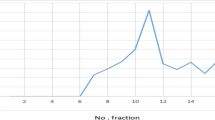Abstract
Numerous yeast species in many genera are able to produce and excrete extracellular toxic proteins (mycocins) that can kill other specific sensitive yeasts. Natural distributions of killer yeasts suggest that they may be important in maintaining community composition and provide a benefit to the toxin producing cells. The fact that not all yeasts are killers and that polymorphisms exist within some killer species suggests there may be a cost associated with killer toxin production. This study focuses on the costs and benefits associated with toxin production by the yeast Pichia kluyveri. Strains differing in their ability to kill were obtained by tetrad dissection. One parent strain produced spores that exhibited a trade-off between killing ability and intrinsic growth rate. A killer clone from this strain was able to maintain a higher proportion of cells than a non-killer when grown with the same sensitive yeast under laboratory-simulated natural conditions. On the other hand, when grown with a yeast not sensitive to Pichia kluyveri toxin, the non-killer maintained a higher proportion of the total community than did the killer clone. The data support the hypothesis that there are both costs and benefits to producing killer toxin, and based on this, selection may favor different phenotypes in different conditions.
Similar content being viewed by others
References
Abranches J., Morais P.B., Rosa C.A., Mendonça-Hagler L.C. and Hagler A.N. 1997. The incidence of killer activity and extracellular proteases in tropical yeast communities. Can. J. Microbiol. 43: 328–336.
Abranches J., Vital M.J.S., Starmer W.T., Mendonça-Hagler L.C. and Hagler A.N. 2000. The yeast community and mycocin producers of guava fruit in Rio de Janeiro, Brazil. Mycologia 92: 16–22.
Abranches J., Starmer W.T. and Hagler A.N. 2001. Yeast-yeast interactions in guava and tomato fruits. Microb. Ecol. 42: 186–192.
Buzzini P. and Martini A. 2000. Biodiversity of killer activity in yeasts isolated from Brazilian rain forests. Can. J. Microbiol. 46: 607–611.
Crombie A.C. 1947. Interspecific competition. J. Anim. Ecol. 16: 44–73.
Darwin C. 1872. The Origin of the Species (6th edn 1958). Mentor Books, New York.
Darwin C. 1897. The Variation of Animals and Plants Under Domestication. D Appleton & Company, New York.
Elton C.R. and Miller R.S. 1954. The ecological survey of animal communities: with particular system of classifying habitats by structural characters. J. Ecol. 42: 460–496.
Fowell R.R. 1969. Sporulation and hybridization of yeasts. In: Rose A.H. and Harrison J.S. (eds), The YeastsVol. 1. Academic Press, New York, pp. 303–383.
Garcia-Bustos J. and Tomasz A. 1990. A biological price of antibiotic resistance: Major changes in the peptidoglycan structure of penicillin-resistant pneumococci. Proc. Nat. Acad. Sci. USA 87: 5415–5419.
Gill D.E. 1972. Intrinsic rates of increase, saturation densities, and competitive ability. I. An experiment with paramecium. Am. Nat. 106: 461–471.
Gill D.E. 1974. Intrinsic rate of increase, saturation density, and competitive ability. II. The evolution of competitive ability. Am. Nat. 198: 103–115.
Kagan B.L. 1983. Mode of action of yeast killer toxins: channel formation in lipid bilayer membranes. Nature (London) 302: 709–711.
Magliani W., Conti S., Gerloni M., Bertolotti D. and Polonelli L. 1997. Yeast killer systems. Clin. Microbiol. Rev. 10: 369–400.
Middelbeek E.J., Hermans J.M.H. and Stumm C. 1979. Production, purification and properties of a Pichia kluyveri killer toxin. Antonie van Leeuwenhoek 45: 437–450.
Miller R.S. 1967. Pattern and process in competition. In: Cragg J.B. (ed.), Advances in Ecological Research Vol. 4. Academic Press, New York, pp. 1–74.
Nunney L. 1996. The response to selection for fast larval development in Drosophila melanogaster and its effect on adult weight: an example of a fitness trade-off. Evolution 50: 1193–1204.
Simms E.L. and Rausher M.D. 1989. The evolution of resistance to herbivory in Ipomoea purpurea. II. Natural selection by insects costs of resistance. Evolution 43: 573–585.
Starmer W.T., Ganter P.F., Aberdeen V., Lachance M.A. and Phaff H.J. 1987. The ecological role of killer yeasts in natural com-munities of yeasts. Can. J. Microbiol. 33: 783–796.
Starmer W.T., Ganter P.F. and Aberdeen V. 1992. Geographic distribution and genetics of killer phenotypes for the yeast Pichia kluyveri across the United States. Appl. Environ. Microbiol. 58: 990–997.
Starmer W.T. and Gilbert D.G. 1982. A quick and reliable method for sterilizing eggs. Drosophila Information Service 58: 170–171.
Thompson Sir D.W. and Bonner J.T. (eds) 1961. On Growth and Form. Cambridge University Press, Cambridge.
Yap N.A., de Barros Lopes M., Landridge P. and Henschke P.A. 2000. The incidence of killer activity of non-Saccharomyces yeasts toward indigenous yeast species of grape must: potential application in wine fermentation. J. Appl. Microbiol. 89: 381–389.
Author information
Authors and Affiliations
Rights and permissions
About this article
Cite this article
Pintar, J., Starmer, W. The costs and benefits of killer toxin production by the yeast Pichia kluyveri. Antonie Van Leeuwenhoek 83, 89–97 (2003). https://doi.org/10.1023/A:0000000089097
Issue Date:
DOI: https://doi.org/10.1023/A:0000000089097




